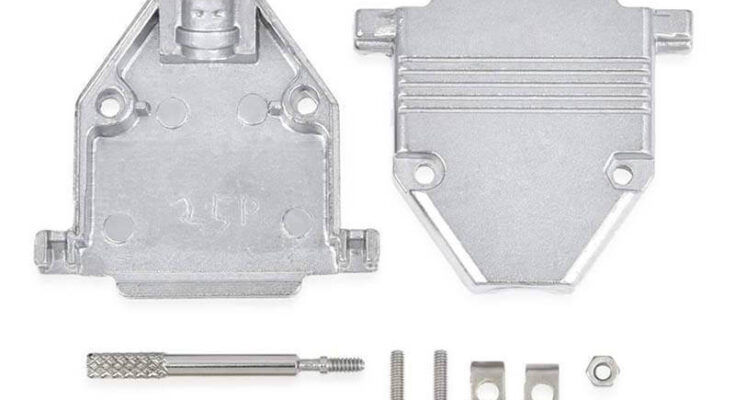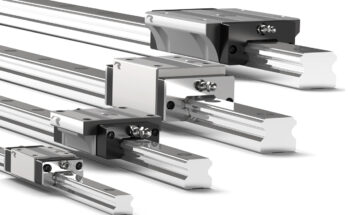When working with D-Sub connectors in a variety of settings—from industrial automation and telecommunications to computing and instrumentation—the choice of hood material can significantly affect the performance, longevity, and reliability of your cable assemblies. Whether you’re designing a ruggedised outdoor application or a compact indoor device, selecting between plastic and metal D-Sub hoods is more than just a cost consideration.
Each option brings its own set of benefits and drawbacks, and understanding these differences will help you make an informed decision tailored to your specific application.
Understanding the Role of D-Sub Hoods
D-Sub hoods serve multiple purposes. Primarily, they offer physical protection to the connector and the connection points. They also provide strain relief for the cable, help reduce electromagnetic interference (EMI), and offer a secure mating connection by shielding the internal contacts. Without a hood, D-Sub connectors are vulnerable to dust, physical damage, and electrical noise, which can compromise data transmission and equipment performance.
The decision to opt for a plastic D-sub hood or a metal sub D hood is influenced by factors such as environment, durability, EMI shielding, ease of assembly, and cost. Let’s explore how each material type performs in these areas.
Durability and Physical Protection
If your application involves regular plugging and unplugging or exposure to mechanical stress, durability becomes a critical consideration.
- Metal sub-D hoods generally offer superior mechanical strength. They are resistant to crushing, impact, and wear, making them ideal for environments where connectors may be handled frequently or subjected to rough conditions.
- In contrast, a plastic D-Sub hood can be less durable under stress. While modern plastics are often tough and lightweight, they may not withstand heavy physical abuse or extreme temperatures as well as metal options.
For factory floors, military-grade equipment, or any outdoor installation, the added robustness of metal hoods often justifies the investment.
EMI/RFI Shielding Capabilities
Electromagnetic interference (EMI) and radio frequency interference (RFI) can seriously disrupt data transmission, especially in settings dense with electronic equipment. This is where shielding becomes vital.
- Metal hoods naturally provide excellent EMI/RFI shielding. Because of their conductive nature, they help prevent interference from both external and internal sources, making them a reliable choice for high-speed data or signal-sensitive environments.
- On the other hand, plastic hoods do not inherently offer the same level of shielding. However, certain high-end plastic models may include internal metalised coatings or inserts to enhance EMI protection, though this can increase cost and complexity.
If you’re operating in a medical, aerospace, or broadcast environment where signal integrity is paramount, the shielding benefits of metal D-Sub hoods should not be overlooked.
Weight and Compactness
Size and weight are important design considerations, especially for consumer electronics, handheld devices, or compact installations.
- Plastic D-Sub hoods are significantly lighter than their metal counterparts. This can make a notable difference in portable equipment or devices where every gram matters.
- Metal hoods, while heavier, can be more compact depending on the design and offer better heat dissipation.
For example, in a lightweight sensor or consumer device where mobility is important, a plastic hood may be perfectly suitable.
Environmental Conditions and Resistance
Different environments demand different levels of protection against elements such as moisture, chemicals, and temperature extremes.
- Metal sub-D hoods tend to have better resistance to extreme temperatures and chemical exposure. This makes them a reliable option for harsh industrial environments, including oil and gas facilities or chemical plants.
- Plastic hoods are often designed for indoor or protected environments. However, high-performance plastics may still perform well in moderately challenging settings.
If your installation is likely to be exposed to volatile substances or high thermal fluctuations, metal hoods are generally the safer bet.
Cost Considerations
Budget often plays a significant role in selecting components, particularly for large-scale or high-volume projects.
- Plastic D-Sub hoods are typically less expensive and more readily available in various configurations. They are easy to manufacture and offer adequate performance for low-risk applications, making them a cost-effective solution.
- Metal hoods are more costly due to the material itself and the added manufacturing complexity. However, the extended lifespan and enhanced protection can often offset the initial higher price.
Choosing between the two comes down to balancing cost against operational demands and the risk of failure.
Ease of Assembly and Customisation
Installation time and compatibility with existing systems can affect project timelines and maintenance schedules.
- Plastic hoods are usually easier and quicker to assemble. Many are designed with clip-together or screw-lock features that simplify installation without requiring specialised tools.
- Metal hoods may involve more components and steps during assembly, but often offer superior cable strain relief and secure fitment.
Additionally, plastic hoods may be easier to customise with branding, labels, or colour coding, which can be advantageous in environments with complex wiring schemes.
Applications: Which to Choose and When?
Ultimately, your specific application will determine which hood is best suited to your needs.
- Plastic D-Sub hood applications:
- Office and home computing equipment
- Consumer electronics
- Light-duty communication devices
- Educational tools and prototypes
- Metalsub-DD hoods applications:
- Industrial automation and control systems
- Military and aerospace installations
- Medical and scientific equipment
- High-speed data and audio-visual applications
Final Thoughts
Choosing between plastic and metal D-Sub hoods isn’t simply a matter of preference—it’s a decision that can impact the long-term reliability and performance of your equipment. While plastic hoods offer ease of use, lightweight handling, and affordability, metal hoods stand out in areas of durability, shielding, and environmental resilience. For low-risk, indoor, or cost-sensitive projects, a plastic D-Sub hood is likely to deliver all the functionality required without unnecessary expense. However, for demanding industrial applications where signal integrity, robustness, and environmental factors come into play, metal sub-D hoods offer a level of protection and longevity that plastic simply can’t match.
Before making your choice, always consider the specific challenges and priorities of your application. In many cases, the upfront investment in the right hood can save time, money, and frustration down the line.




